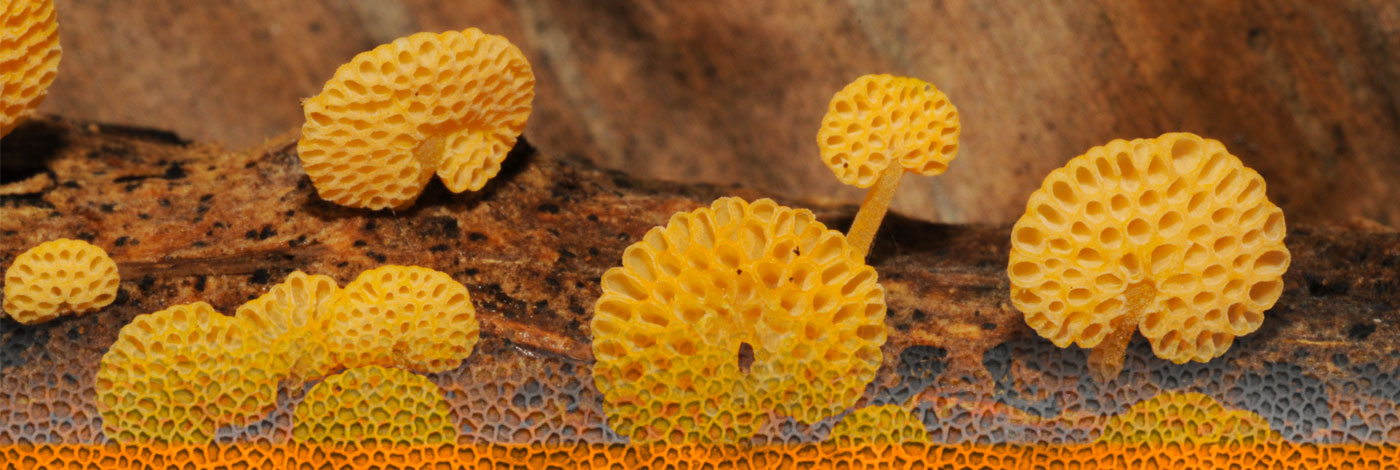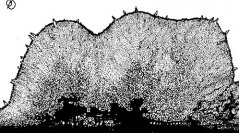

 Cryptogamie, Mycologie
34 (4) - Pages 291-301
Cryptogamie, Mycologie
34 (4) - Pages 291-301Two new species of the genus Phlebia with tuberculate hymenophore, Phlebia rhodana and Phlebia jurassica (Polyporales, Basidiomycota), collected in the French departments Rhône and Jura respectively, are described and illustrated. The former is recognized by a resupinate, adnate basidiome, becoming widely effused and thick, up to 100 × 15 cm, and 2.5 mm thick; when fresh subgelatinous, ceraceous to subcartilaginous, becoming corneous when dried, with or without cracks. Hymenial surface continuous, smooth, granulose then verrucose-tuberculate with broad warts, or odontoid to subhydnoid with conical, crowded teeth with fimbriate to encrusted bristle apices; in fresh specimens brownish grey, light brown to brownish yellow with rosy or violaceous tints, sometimes reddish brown to very dark chocolate brown, lighter towards apices. Margin thinner, smooth, closely adherent to the substrate, ceraceous or sometimes fibrillose. Context homogeneous, composed of a single layer of densely agglutinated clamped hyphae, with crystalline white deposits up to theapex of the teeth. In hymenium composed of clavate, short basidia, 15-35 × 3.5-5 m, some terminal dendroid hyphae and rare fusoid elements (cystidioles?). Spores 4.5-5-5.7 × 2.6-3-3.5 m, shortly ellipsoid or oblong, adaxially slightly flattened, with hyaline, smooth walls, negative in Melzer's reagent. Phlebia jurassica has a basidiome that is resupinate, adnate, subgelatinous to ceraceous when fresh, becoming crustaceous, hard, brittle and with frequently uplifted margin when dried; pale ochraceous to pale brown, with a faint greyish or reddish tint. Surface papillose, pruinose, with more or less prominent bumps; margin variable, often fibrillose. Hyphal system monomitic, hyphae with clamps, those of the subiculum loosely united, irregular, 4-8 m wide, in the subhymenium 2-4 m wide and more densely united in a vertical direction. Cystidia numerous, immersed or projecting, 30-110 × 11-25 m, thin- or thick-walled, stalked, often more or less ventricose and tapering to the more or less obtuse and incrusted apex. Basidia subclavate to subcylindrical, 25-45 × 3.5-5.5 m, with (2-)4 sterigmata and basal clamp. Spores narrowly ellipsoid to subcylindrical, 4.5-6(-7.5) × (2-)2.5-3.5 m, smooth, thin-walled, with oil drops, non-amyloid and non-cyanophilous.